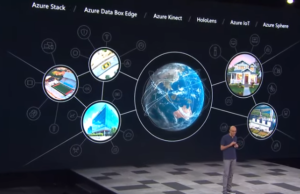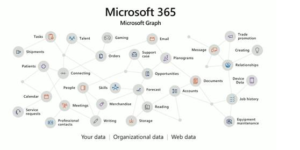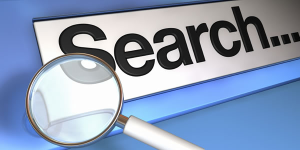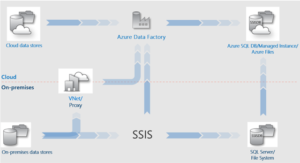
Microsoft Unveils New AI Tools and Services at Build 2019

Whether you’re interested in using machine learning to build intelligent chatbots, wrangling big data flows, or deploying scale-out databases in the cloud, there was a little something for everybody unveiled today at Microsoft Build 2019.
Six thousand people are attending Microsoft Build 2019 in Seattle, Washington this week, to hear about the latest development tools that Microsoft is making available to its customers. Today’s announcements ran the gamut — this Microsoft press release contains dozens of new items or enhancements — but we’ve drilled down into the most important announcements.
Smarter Chatbots
Chatbots have become pervasive in our society. People rely on them daily for a variety of informational tasks, from fetching the final score of basketball games ordering a large pepperoni.
But for all the use that natural language processing (NLP) creations like Siri, Cortana, and Alexa are getting, there’s still a lot to be desired when it comes to having a natural conversation with them. Dan Roth, the corporate vice president at Microsoft and former CEO of Semantic Machines (which Microsoft acquired last year), pointed this out in a blog post today.
“You have to poke around for magic combinations of words to get various things to happen, and you find out that a lot of the functions that you expect the thing to do, it actually just can’t handle,” Roth says.
While today’s “intelligent assistants” (a fancier term for chatbots) use machine learning to understand language and concepts, they must be paired with rules-based systems that are pre-programmed to execute a variety of tasks that naturally flow from the conversation between the human and the machine.
If Roth and his former Semantic Machines team has their way, that extra bit of programming will be eliminated, and the assistant will truly become intelligent.
“We want it to be less cognitive load, less feeling like I have to go to PowerPoint for this or Word for that, or Outlook for this and Teams for that, and more about personal preferences and intents,” says Andrew Shuman, Microsoft’s corporate vice president for Cortana.
Microsoft shared a little bit of what it’s working on in that regard at Build 2019 today. The company demonstrated a calendaring application that uses Semantic Machines technology to make organizing one’s day with an intelligent assistant a more fluid experience. The technology will eventually be used in Cortana and made available in the Microsoft Bot Framework and Azure Bot Service.
The company also has a preview for Ideas, a new “AI-powered editor in the cloud” that will be available for Word Online users next month. According to Microsoft, Ideas “follows along as you write and provides intelligent suggestions to make your writing more concise, readable, and inclusive.” It can also rewrite sentences for you, extract key points, and thanks to connections with Microsoft Graph (see below), decode acronyms.
These AI enhancements, in addition to other Microsoft announcements, could spell trouble for Microsoft’s tech competitors, says Ryan Duguid, chief evangelist at Nintex.
“With the addition of AI-powered Ideas, Actionable Messages, Fluid Framework and a refocused Cortana, the company is making efforts to keep key users from migrating to other workplace apps like Slack, Zoom or Google Drive,” Duguid says. “This emphasis on improved productivity and automation shows that Microsoft intends to win in the workplace software arms race and doubling down on its commitment to power the future of work.”
Microsoft Graph
One of the more interesting announcement made today was the general availability of Microsoft Graph data connect. The software builds on Microsoft Graph, which is a unified, API-driven programming and security model that builds off Azure Active Directory to control access to data residing across multiple Microsoft properties, including users’ Windows 10 machines, Office 365 apps, mobile devices, and security tools, among others.
The “graph” part of Microsoft Graph is the use of graph computing techniques to find track and find connections among users, their devices, and various interactions with Microsoft products and cloud properties. And now with Microsoft Graph data connect, Microsoft is providing a way to streamline the data from Microsoft Graph into the Azure Data Factory, where it can be utilized in more ways.
For example, the new data connect could allow an employee to find the individual who’s physically close to them within an organization and is also an expert in a given topic. It also could be used to automate the creation of knowledge bases, or to analyze requests to use conference rooms to determine the utilization rate of those rooms, the software giant says.
“By allowing organizations to maintain control of their data, while bringing it together in a secure and compliant way, data connect lets organizations derive deep insights about effective work patterns that they can promote throughout their organization,” writes Rajesh Jha, executive vice president of Microsoft Experiences and Devices, in a blog post today.
Microsoft also sees Graph data connect being used to bolster organizations’ data governance standing through the capability to grant consent at a granular basis. This will help developers specify exactly what types of data an application can access, while also tracking requests for consent, which is a big component of GDPR and other new laws governing how organizations can use private data.
Microsoft also announced the public preview of the Microsoft Graph toolkit, which is a JavaScript-based library that makes it easy to enable Microsoft Graph to control access to files, tasks, and calendar items inside an app. It also announced new connectors for Microsoft Graph connectors that will bring non-Microsoft applications parties to the Microsoft Graph party. The connectors are in a private preview at the moment; the company is working with SaaS provider ServiceNow to hammer it out.
Microsoft Graph data connect is now generally available as a feature in Workplace Analytics, and it’s also available to software vendors. For more information, check out this post by the Microsoft Graph team.
Microsoft Search
Today also marks GA of Microsoft Search, the company’s new flagship search engine that works across Windows, Office, SharePoint, OneDrive, Bing and other Microsoft properties.
Microsoft Search is hooked into Microsoft Graph and brings other AI capabilities to bear on the challenge of finding relevant content stored across a variety of (Microsoft) data sources. No matter if a user is in Word or Outlook, he will be able to execute a search that touches all relevant Microsoft properties.
One interesting aspect of Microsoft Search is how it will deliver more personalized results from users’ own files and conversations. The search engine will weigh commonly contacted colleagues and recently accessed documents in its search result rankings, and the administrator will also be able to bring some curated content into the results too.
The cross-product functionality will reach new heights with the new “zero-query typing,” which will allow users to complete certain daily productivity tasks directly from within the search bar. For example, if a user begins to type “acc,” a list of suggested actions will pop up, such as “accept revision” or “accessibility checker.”
Microsoft Search is being rolled out now for Office 365; third-party app and services connectors will enter preview later this year.
Mapping Data Flows
Data engineers can build ETL and ELT workflows within Azure Data Factory. Today, Microsoft announced that it’s adding several new features to the factory.
The first is Mapping Data Flow, which is powered by technology from Databricks, the company behind Apache Spark. With a few clicks, Microsoft says, users can build automated workflows that transform and data as its flowing from the ingest point to the point of data consumption. Mapping Data Flow is available now.
The company also announced Wrangling Data Flows, which is available in preview at the moment. The new service aims to simplify the wrangling and cleansing of big data in a visual manner, without the use of code.
Many of today’s most interesting data are semi-structured in form. To that end, Microsoft announced a preview of support for analyzing semi-structured data (i.e. JSON) in Azure SQL Data Warehouse.
Hyperscale Databases
The company also added some new pieces to its Azure cloud environment, which is currently the number two public cloud platform behind Amazon Web Services but growing more quickly.
First, Microsoft bolstered its Azure Kubernetes Service (AKS), its Kubernetes-based workload scheduler, with a pair of additional services. That includes Kubernetes Event–driven Autoscaling (KEDA) which streamlines the deployment of serverless event-driven containers on Kubernetes. KEDA, which is open source, is currently in preview, and will soon be available for cloud and on-premise workloads.
The software giant (the world’s largest company by market capitalization) also unveiled Azure Policy for AKS, which helps administrators protect AKS clusters and ensure they’re running on a compliant manner.
Microsoft also put its recent acquisition of Citus Data to use with the new Azure Database for PostgreSQL Hyperscale offering. The new Azure offering (which is in preview) uses Citus’ technology to horizontally scale a Postgres database across hundreds of nodes. This approach enables users to stuff more data into memory and ingest data at higher speeds, according to Microsoft.
Azure SQL Database Hyperscale, which allows the separation of compute and database storage, is now generally available (GA). Microsoft says this service will eliminate the need for customers to pre-provision storage resources when setting up their Azure environments. Transaction and analytical workloads with storage requirements of 100TB on a single scale-up symmetric multiprocessor (SMP) machines are good fits for this service, Microsoft says.
Related Items:
Microsoft Expands Hadoop on Azure
Microsoft Azure Data Warehouse Gets a Tune Up
Azure SQL Warehouse Gets New Data Link
































